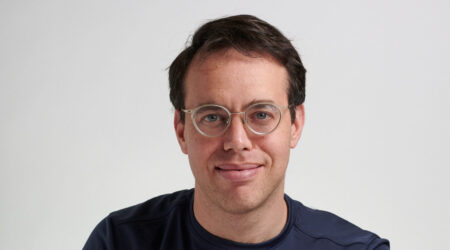Today, a world without “gender” is hard to imagine. Gender is at the center of contentious political and social debates, shapes policy decisions, and informs our everyday lives. Its formulation, however, is lesser known: gender was first used in clinical practice.
On November 9, 2022, Social Science Matrix hosted an Authors Meet Critics panel discussion on How the Clinic Made Gender: The Medical History of a Transformative Idea, by Sandra Eder, Associate Professor of History at UC Berkeley.
Eder was joined in conversation by Laura Nelson, Associate Professor of Gender and Women’s Studies at UC Berkeley, and Danya Lagos, Assistant Professor in the UC Berkeley Department of Sociology. The panel was moderated by Catherine Ceniza Choy, Professor of Ethnic Studies and Associate Dean of Diversity, Equity, Inclusion, Justice, and Belonging in the UC Berkeley Division of Computing, Data Science, and Society.
The panel was co-sponsored by the UC Berkeley Department of History, Department of Gender and Women’s Studies, Center for Race and Gender, and Center for Science, Technology, Medicine and Society (CSTMS).
In How the Clinic Made Gender, Eder tells the story of the invention of gender in American medicine, detailing how it was shaped by mid-20th-century American notions of culture, personality, and social engineering. The book shows how the concept of gender transformed from a pragmatic tool in the sex assignment of children with intersex traits in the 1950s to an essential category in clinics for transgender individuals in the 1960s.
“As often, this book started from an intriguing question, or rather what seemed a paradox to me,” Eder explained in her presentation. “I started the project to understand how clinicians in the 1950s formulated the idea of a learned gender role, and yet at the same time, the very same people devised normalizing treatment protocols for children with intersex traits involving non-consensual genital surgery, which have been widely criticized since the late 1980s.”
The book “shows the intrinsic links between these two stories by examining the shifting landscapes of discussion about sex and gender and sexuality in these cases,” Eder said. “Above all, the book is a story about how gender was made, the intricate way in which ideas were put into practice, and practices informed ideas…. While novel in its formulation is sex gender binary, it was rather a consolidation of several currents in the social sciences, psychology, and psychiatry, with medical practices and social norms.”
“Gender was and is a dynamic category,” she said. “Different groups use the term gender to delineate various relationships between nature and nurture, biology and culture. So these meanings change over time and through practices.”
In commenting on the book, Danya Lagos said that she “really liked the book” and was “interested in the insight it gives us into the logic of how gender was shifting with all of these imperatives of economic, national, and political interests.”
“The most interesting part of the book for me was the context of the World War II social engineering,” Lagos said. “It’s very different from kind of the laissez faire neoliberalism after the 1980s. One question I had was, what are the norms towards which society is being engineered? There’s the concern for the parents, but there’s also this handling of someone who really does not fit the mold that society would have set out for them.”
She pointed to the example of how doctors were concerned that a woman, Carol, who was born with male sex traits would not be able to marry and so “might be hard pressed to support herself,” and thus determined that male sex assignment would be a practical solution. “There’s this dialogue between the social sciences and the active social engineering going on,” Lagos said. “It’s never considered that we would allow someone like Carol to live life as a masculine woman. It was, if this person is unmanageable, let’s put them to work and have them at least be able to take care of herself, or themselves, as a man….”
Laura Nelson also said that she found the book thought-provoking. “The concreteness of the research and the storytelling was really helpful in understanding how this particular choreography of the analytic — taking [gender] apart and putting together, taking apart and putting together — happened over time,” Nelson said. “The presumed goal throughout the book is that binary is goal. So what drew me in was the irony of the missed opportunity to take the growing medical and social recognition of the imperfection of a binary sex gender as a call to complexify and recognize variation as normal, and normativities as unrealistic.”
Nelson noted that doctors were too often trapped by societal norms, and so “defined variation as pathology, thereby reinforcing ideas of a normal, even when the variations continue to be confounding of simple binary sorting. Over and over again, you get people wrestling with this binary and saying that that’s pathological, rather than saying that is normative. It’s a story about finding real and profound discoveries of medical and biological operations, and binding them to conservative ideas and practices, rather than allowing discovery to lead to transformation.”


